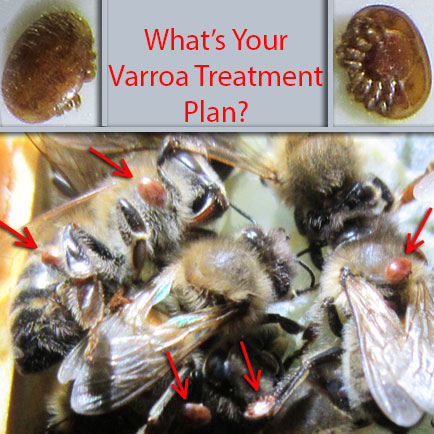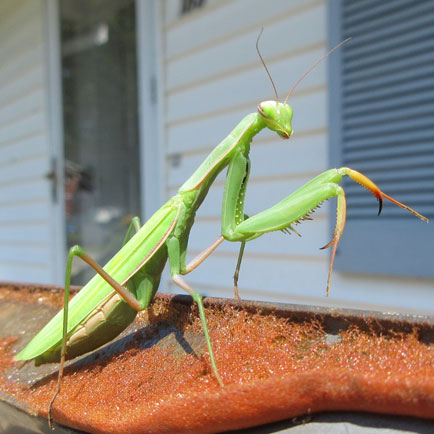
---
---
The goal is to avoid the use of pesticides as much as possible, and to minimize any resulting toxic exposures.
* This is an excellent resource to find the best treatment protocol for your situation:
Varroa Resources
* Download the Mass.Gov Varroa Mite Brochure - pdf here.
Varroa destructor (Varroa mite) is an external parasitic mite that attacks and feeds on the honey bees' Apis cerana and Apis mellifera.
The mite is a vector for at least five debilitating bee viruses that will kill your hive if not mitigated and treated efficiently.
The various treatment protocols range from management to chemical measures. The required treatment usually encompasses both
management AND treatment.
- Wiki Ref.

"Companion planting in gardening and agriculture is the planting of different crops in proximity for any of a number of
different reasons, including pest control, pollination, providing habitat for beneficial insects, maximizing use of space,
and to otherwise increase crop productivity. Companion planting is a form of polyculture."
~ Wiki
We plant Marigolds as an insect deterent and rotate crops for soil fertility.
We stagger crops like potatoes and squash by years to break pest cycles.
We also take a year off for lambs to reduce parasitic load.

We avoid using pesticides and have tried everything from neem oil to picking off bugs by hand. I've started to photograph and identify
specifically overpopulated and destructive bugs like the asparagus beetle, squash bugs and four lined plant bug that wiped out our
squash and oregano. I found a slug that quickly decimated a horseradish plant last year. And, our broccoli was absolutely riddled
with cabbage worms that refused to let go until I soaked them in salt water. They ruined broccoli for me for that whole summer.
This year, we intent to spot spray sparingly to try to knock back the destructive elements of our pest community.
(Side note on the cabbage worms: These are the caterpillars of cabbage white butterflies and they are beautiful.)

Sometimes things get in. It's a farm. It's inevitable. We've had our go 'round with pantry moths. Spiders are our friends. Spring brings sugar ants and fall has been accompanied by the invasion of the stink bug hoards. We use pesticides VERY sparingly. Sticky traps work. But most of all, protecting all of our pantry goods in air tight containers is key. It hasn't been a real problem, but I felt it was worth mentioning.

We are in a suburban area. The creatures we get most frequently are:

Some are good, some are bad.
Managing populations of insects that destroy food crops without hindering the work of our
beneficial insect friends is a fine line to walk. Bugs are everywhere in the garden.
It seems like there's an individual species of bug for every fruit and vegetable crop we grow,
and each requires its individual management protocol.
We do our best to identify them as we encounter them, and address each destructive incident individually.

Just like bugs, not all of these guys are bad. Some are lovely, but others wreak havoc.
